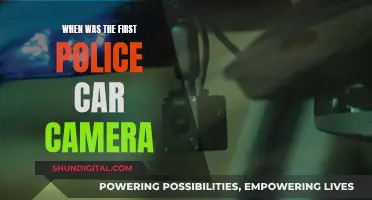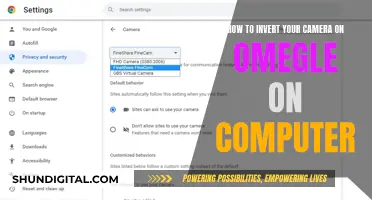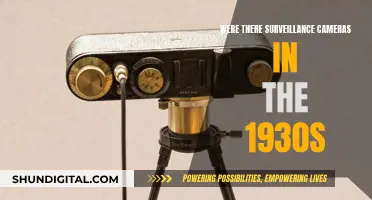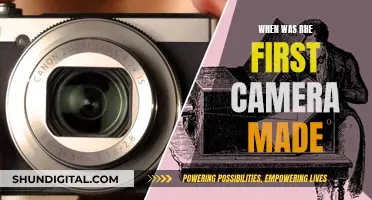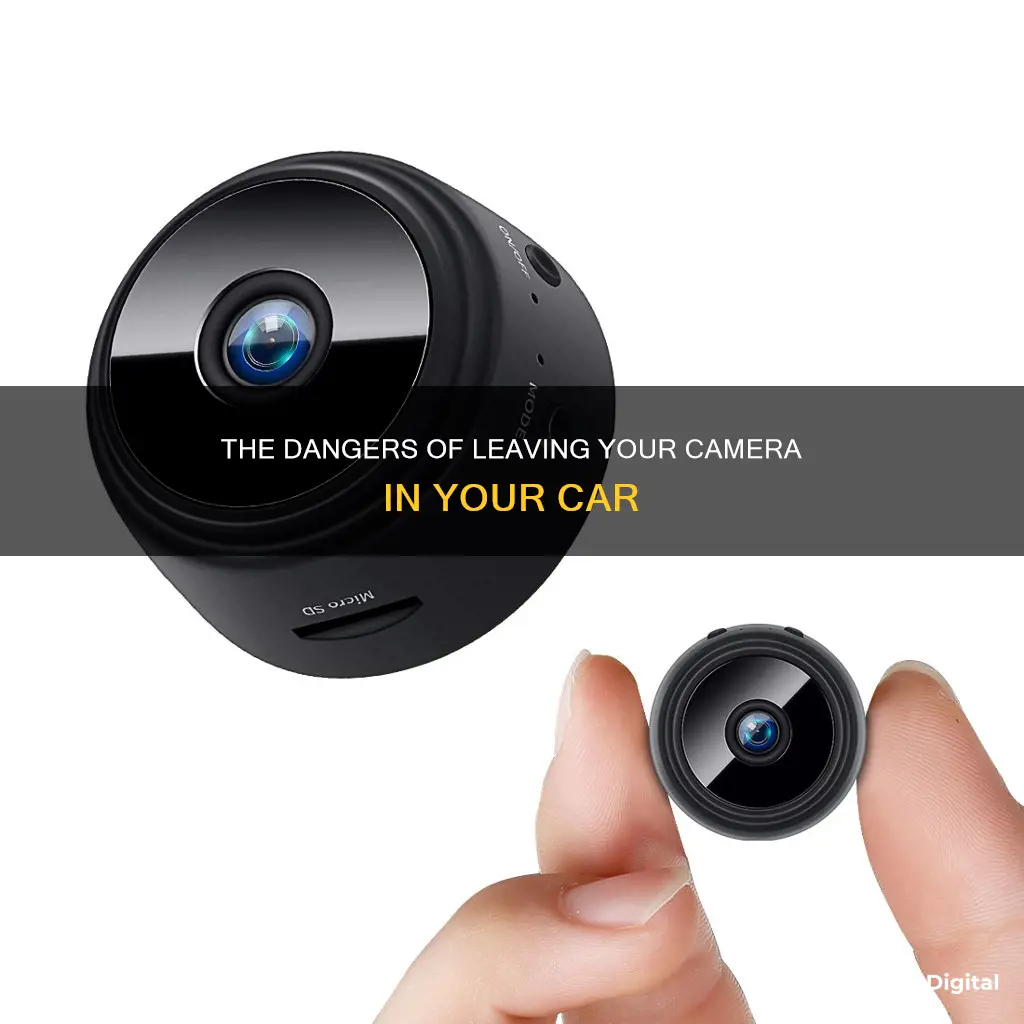
Leaving your camera in the car can be a risky business. Extreme temperatures can damage your camera, with the cabin of a car reaching up to 71°C in hot weather. This can affect the delicate parts of your camera, and long-term exposure to UV can also fade the exterior finish and weaken materials. However, some photographers do leave their cameras in the car, taking precautions such as keeping the camera out of direct sunlight, covering it with a light-coloured cloth, and leaving it in the shade. The trunk of a car is a better option, as the temperature will be closer to the ambient air temperature, but it's still a risk. The main concern for many photographers is theft, with some insurance policies offering low limits for expensive gear stolen from cars.
| Characteristics | Values |
|---|---|
| Camera damage from heat | Possible, especially if the camera is in direct sunlight. |
| Camera damage from cold | Unlikely, unless there is a condensation issue. |
| Camera theft | Likely, especially in tourist areas. |
| Camera insurance | May not cover cameras in unattended cars. |
What You'll Learn

Heat damage to internal components
The internal components of a camera can be sensitive to heat, and leaving your camera in a hot car for extended periods can potentially damage these components. The heat can cause lubricants in the camera to melt, affecting the functioning of various parts such as the aperture blades. This can result in the blades sticking together and requiring professional cleaning and re-lubrication.
To minimise the risk of heat damage, it is recommended to avoid leaving your camera in direct sunlight or in the car for prolonged periods. If you must leave your camera in the car, park in a shaded area, cover your camera with a light-coloured cloth, and keep it in a well-ventilated area to prevent excessive temperature build-up. Additionally, consider investing in a cooler with dry ice or cold packs to help regulate the temperature.
It is also worth noting that while some cameras have higher temperature tolerances, it is always best to err on the side of caution. Always refer to your camera's manual for specific temperature guidelines and recommendations.
History of Brownie Starlet: The Iconic Camera's Evolution
You may want to see also

Stolen gear
Leaving your camera in your car can result in it being stolen. Thieves can break into your car without leaving any traces and steal your gear. This can happen even if your car is locked, and it is not uncommon for insurance companies to refuse to cover the cost of stolen items if there is no visible damage to the car.
To prevent theft, it is advisable to avoid keeping all your gear or important items in one place. That way, if something is stolen, the loss is minimised. It is also a good idea to always carry a photocopy of your ID and keep the original with you at all times.
If your camera is stolen, you can try to locate it using its serial number. Websites such as Stolen Camera Finder allow you to search for other photos taken with the same camera by inputting its serial number. This can help you track down the thief and recover your stolen property.
Surveillance Cameras: Are You Being Watched While Shopping?
You may want to see also

Condensation issues
Condensation is a real problem for cameras in cars, especially in cold weather. The issue is not the condensation on the outside of the camera but the moisture that gets into the internal mechanisms. This can be avoided by not moving a cold camera directly into a warm, humid room.
If you're going to store your camera in the car, it's best to keep it in the trunk, which is cooler and less humid than the passenger compartment. It's also a good idea to keep it in a camera bag out of direct sunlight and to allow it to warm or cool to ambient temperatures before removing it from the case.
If you're shooting in hot weather, you can keep your camera gear in a cooler with a divider to keep it dry and above cold packs. You can also cover your camera with a light-colored cloth when shooting or on breaks to protect it from the sun.
Mounting Cameras on Remote Control Cars: A Step-by-Step Guide
You may want to see also

Faded exterior finish
The exterior finish of a camera can fade over time, especially if exposed to direct sunlight, harsh weather, and extreme temperatures. This is because UV rays break down the chemical bonds in the paint, causing the colour to fade. Additionally, the type of paint used can also contribute to fading. Flat paint, for example, will absorb more UV rays, leading to faster degradation.
To prevent the exterior finish of your camera from fading, consider the following:
- Choose a camera with a light-coloured exterior. Lighter colours reflect light and UV rays, while darker colours absorb more light and fade faster.
- Select a camera with a semi-gloss or reflective coating. These coatings have a protective clear layer that reflects UV rays and slows down pigment degradation.
- Store your camera in a camera bag when not in use. This will protect it from direct sunlight and extreme temperatures.
- Avoid leaving your camera in a hot car for extended periods. High temperatures can accelerate the fading process and damage the camera's electronics and adhesives.
- Use a lens filter to protect the lens from direct sunlight and UV rays. This will reduce the amount of UV radiation that reaches the lens and slow down fading.
- Regularly clean and maintain the camera's exterior. This will remove any contaminants that can accelerate fading and help extend the life of the finish.
By following these tips, you can help prevent the exterior finish of your camera from fading and maintain its appearance for a longer period.
Car Cameras: Are They Legal to Use?
You may want to see also

Weakened and brittle materials
The cabin of most cars can get very hot during the summertime. The energy from the sun is allowed to pass through the window glass, and the lack of airflow doesn't allow the heat to be dissipated. This can cause some of the most delicate parts of your camera to be affected. If your camera is left in direct sunlight, long-term exposure to UV rays can cause some materials to become weak and brittle.
To avoid this, you can store your camera in the trunk of your car, which will stay much closer to the ambient air temperature and hidden from thieves. You can also store your camera inside a protective bag, backpack, or case to allow it to warm or cool to ambient temperatures before removing it from the case.
Kodak Camera Battery: How to Spot a Bad One
You may want to see also
Frequently asked questions
It depends on the temperature inside the car. Extreme heat can damage the camera's electronics and adhesives, and direct sunlight can fade the exterior finish. However, some people have reported leaving their cameras in cars in hot climates without any issues.
Keep the camera out of direct sunlight, preferably in a bag or protective case, and avoid leaving it in the car for extended periods. If you must leave it in the car, park in the shade, cover the car with a light-coloured sheet, and leave the windows open.
This is less likely to be a problem, unless there is a condensation issue when bringing the camera into a warm, humid environment.
Theft is a major concern when leaving camera equipment in a car. Consider leaving the windows open and putting a lock on the camera bag. Check your insurance policy, as some policies have a low limit for paying out on expensive gear stolen from cars.
Most cameras are rated for temperatures between 0 and 40°C (32-104°F). Storage temperature ratings are usually broader than operating temperature ratings, but this varies by manufacturer.


